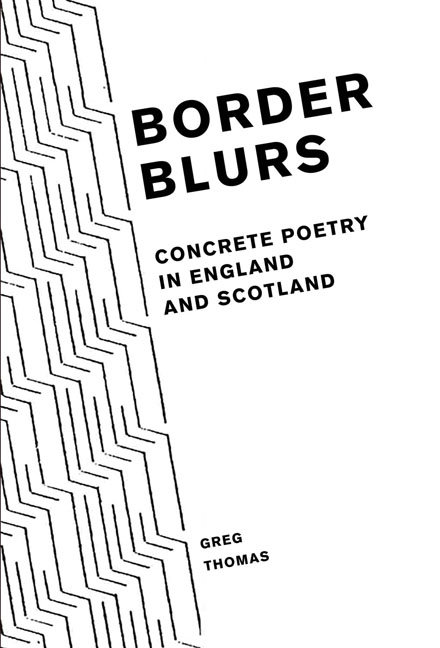Book contents
- Frontmatter
- Contents
- Dedication
- Figures
- Notes on Referencing
- Acknowledgements
- 1 Introduction
- 2 Concrete Poetry/Konkrete Poesie/Poesia Concreta: The International Scene
- 3 Order and Doubt: Ian Hamilton Finlay
- 4 Off-Concrete: Edwin Morgan
- 5 Apophasis: Dom Sylvester Houédard
- 6 Abstract Concrete: Bob Cobbing
- 7 ?Concrete Poetry and After: Conclusion
- Works Cited
- Index
3 - Order and Doubt: Ian Hamilton Finlay
- Frontmatter
- Contents
- Dedication
- Figures
- Notes on Referencing
- Acknowledgements
- 1 Introduction
- 2 Concrete Poetry/Konkrete Poesie/Poesia Concreta: The International Scene
- 3 Order and Doubt: Ian Hamilton Finlay
- 4 Off-Concrete: Edwin Morgan
- 5 Apophasis: Dom Sylvester Houédard
- 6 Abstract Concrete: Bob Cobbing
- 7 ?Concrete Poetry and After: Conclusion
- Works Cited
- Index
Summary
In March 1963, around nine months after Morgan had shown him Melo e Castro's note in the TLS, Ian Hamilton Finlay printed a single page of poems by the Brazilian concrete poets Augusto de Campos, Pedro Xisto, and Marcelo Moura in the sixth issue of his literary magazine Poor.Old. Tired.Horse (POTH). Finlay's first collection of concrete poems, Rapel: 10 Fauve and Suprematist Poems, appeared that same spring, his own experiments with the genre having begun the previous winter. This made him, as he sometimes pointed out, both the first publisher of concrete poetry and the first published concrete poet in England or Scotland. However, within about five years Finlay was pugnaciously dissociating himself from the style, in dismay at its increasing association with a set of aesthetic and ideological positions anathema to his own and because the interaction of linguistic, visual, and sculptural elements in his work was developing beyond the terms of concrete poetry as he had interpreted it.
The relationship between Finlay's work and the spectrum of approaches to concrete poetry posited in my last chapter is thus a complex one. In many ways, Finlay's concrete poetry represents the most concerted attempt within Scotland or England to adhere to a classical, mid-century conception of the style – certainly, his work was in no sense ‘neo-dada’, a description Finlay used as a term of disparagement – and yet it bears complexities of form and theme that cannot be accounted for by earlier models of concrete practice. It was partly the exacerbation of some of these points of tension, and not just Finlay's unease about the connotations of the label ‘concrete poet’ by the late 1960s, that ultimately led him to reject it. Complicating the picture further, we must also assess Finlay's concrete poetry in relation to contemporaneous debates around Scottish literature and culture, as his adoption of it was in part a means of placing his work in opposition to dominant strains within early 1960s Scottish literary culture, especially the literary and ideological positions he associated with Hugh MacDiarmid.
Stylistically, Finlay's work can be seen to involve the realisation of thematic duality through formal duality. The term ‘thematic duality’ here indicates Finlay's ability to generate striking or unexpected associations between different objects, concepts, and phenomena, sometimes drawn from a single cultural context or imaginative environment, sometimes from entirely separate or contrasting ones.
- Type
- Chapter
- Information
- Border BlursConcrete Poetry in England and Scotland, pp. 65 - 114Publisher: Liverpool University PressPrint publication year: 2019



